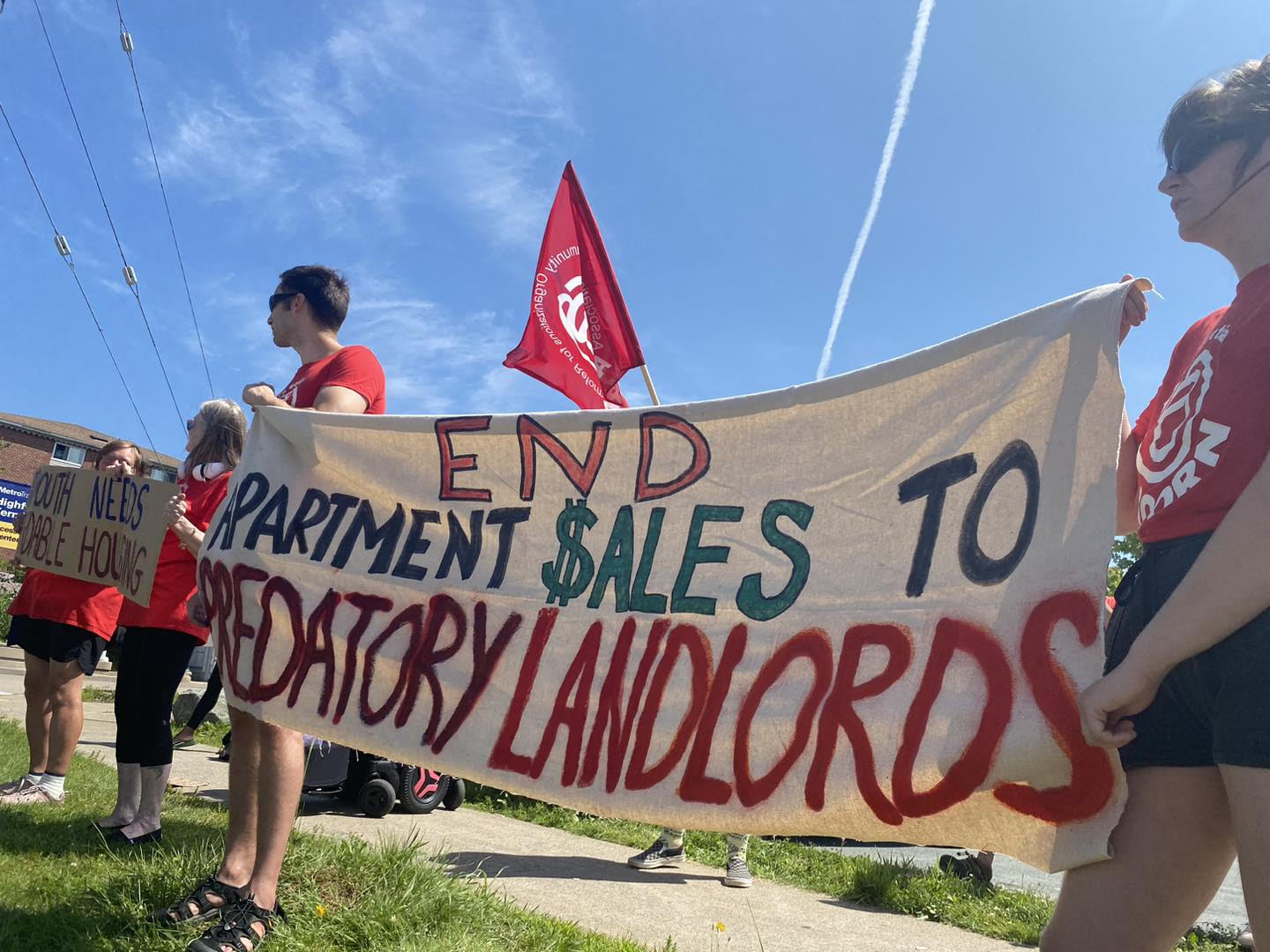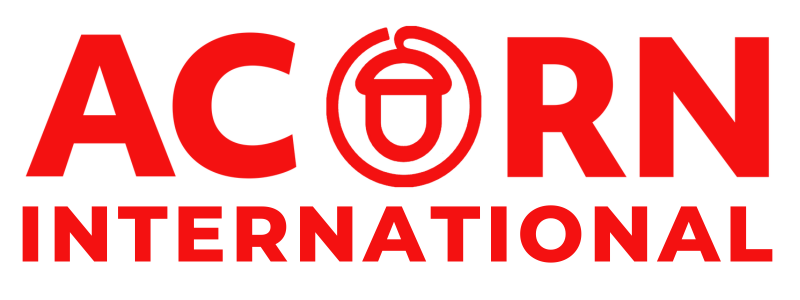Your cart is currently empty!
Author: digital
-

Huddersfield family of five kept safe from eviction!
ACORN’s Huddersfield group is set to officially launch following a successful fight to keep a family in their home. This summer, ACORN members in Huddersfield prevented the eviction of a newborn baby and her family from eviction! Alex and Jenny were expecting their third daughter, when they were served a Section 21 ‘No-Fault Eviction’ the same week their baby was due!Prior to that, they had made numerous complaints to their estate agents about faulty electrics, leaks, lack of heating and widespread damp, which lead their eldest to become hospitalised with asthma for a week!
Their repairs were not resolved, and shortly after a Kirklees Council report was submitted, Alex and Jenny were informed the landlord would be selling the house.A dozen Huddersfield residents, of all ages, marched down to Alex and Jenny’s agents to demand an extension to their tenancy, while 5-day old baby was settling in, and the most urgent of repairs seen to!In the 3 months of sustained action, the landlord sorted the most critical repairs, agreed to let them stay, and even attempted to increase their rent by 15% – which was quickly prevented! Eventually, Alex and Jenny managed to find a new home for their family, and left with their full deposit returned, totalling £714 won back.
To learn how we can fight for a better deal for ordinary people in Huddersfield, come along to our official launch event on Saturday, 14th October. RSVP here.
-

Organizing Works! Manor Village ACORN Tenant Union Wins Fight Against Renoviction!
ACORN Canada took to the streets, organising a national day of action in 9 cities to put an end to sales of apartments to predatory landlords! And Ottawa ACORN are celebrating a massive victory in Manor Village. After 2 years of organising, they were able to force Smart Living Properties to withdraw their eviction notices and allow all tenants to stay in their homes!
-

Cameroon: peasant crops destroyed by Sosucam’s aerial expanses, OnEstEnsemble organizes protest
OnEstEnsemble organized a protest with the eco-union of residents near the SOSUCAM sugar cane plantations. These residents’ crops of cassava, peanuts and yams were destroyed by SOSUCAM’s planes spraying pesticides. The residents gathered the destroyed crops and displayed signs in protest, demanding compensation.
Residents of the sugarcane plantations of the Somdiaa group, subsidiary of the French giant Castel, have been forced to uproot their production of cassava, peanuts and yams, destroyed in their fields by spraying pesticides by the company planes. Several have gathered to protest, and planned to pour their destroyed production in front of the Sosucam headquarters.
The victims demand that the company compensate them for the huge loss.
Organized in the eco-syndicate Riverains Ensemble, the peasants were already asking through a petition to stop air expansion, banned in France.
-

Alliance Citoyenne, Grenoble: Residents of Géants Square Join Forces to Demand Better Services
In a proactive move, the Committee of Géants has taken steps to assert its concerns. On Tuesday morning, a group of residents from the Géants Square decided to pay a visit to the local office of their social housing provider, Actis. Their purpose: to hand-deliver a letter to the responsible party, reminding the housing provider of its responsibilities in light of the consistently poor quality of services in the area .
(more…) -

Living Rent, Edinburgh: Empty Homes Action Sucess
FIVE THOUSAND people in temporary accommodation!
ONE THOUSAND FIVE HUNDRED council properties lying empty in Edinburgh.
SIX HUNDRED of these vacant properties are concentrated within the Lochend/Craigentinny/Restalrig community itself.
(more…) -

ACORN Birmingham: Defending Residents Facing Unjust Evictions
Last month, our affiliates at ACORN Birmingham demonstrated solidarity as we stood alongside our two members, Hetal and Tejas. They currently reside in a city center building and have recently received Section 21 ‘no fault’ eviction notices. Subsequently, it was revealed that the entire building was slated for sale, necessitating the eviction of all tenants in the process.
(more…) -

Living Rent, Scotland: Statement on Climate change
We recognise the urgency and legitimacy of climate change, and the importance of human action and systemic change in building a sustainable future. As a union, we commit to fight for the provision of high quality, green and affordable housing for all and to fight for climate justice across our campaigns.
(more…) -

OnEstEnsemble, Cameroon: Members of the Environmental Collective of Sosucam Residents Secure Commitments from the Director-General Following Citizen Action
Residents living near the sugarcane plantations of the Somdiaa group, a subsidiary of the French giant Castel, fell victim to the destruction of their crops during the month of May 2023. In response to this incident, and despite a written communication, there was no substantial reaction observed from Sosucam.
(more…) -

OnEstEnsemble, Cameroon: Securing the Sidewalks of Republic Boulevard in Bepanda Bonewonda
Following a call from the local branch Onestensemble Bepanda Bonewonda in July 2023, the Mayor of the city swiftly responded to concerns about the large open drains that pose a real danger to pedestrian safety along Republic Boulevard.
(more…) -

CATU Ireland: What Is Wrong With Putting Your Own People First In Your Own Country?
It is a pretty reasonable statement to make in the context of a housing
shortage, but we need to discuss what is wrong with it.
(more…)
I have been involved in tenant organizations in Ireland since 2017. The main work I have done is knocking at people’s doors and asking how their housing situation is and what they think we could do together to change it. Being Brazilian and a woman I rarely get racist or sexist statements at the doors, which could be anticipated.
